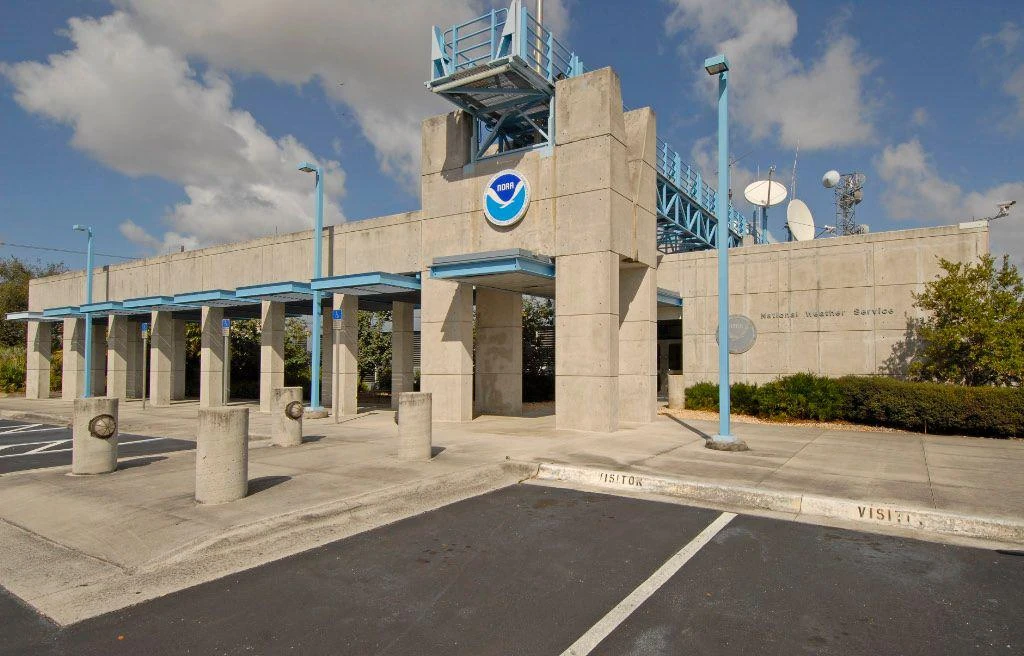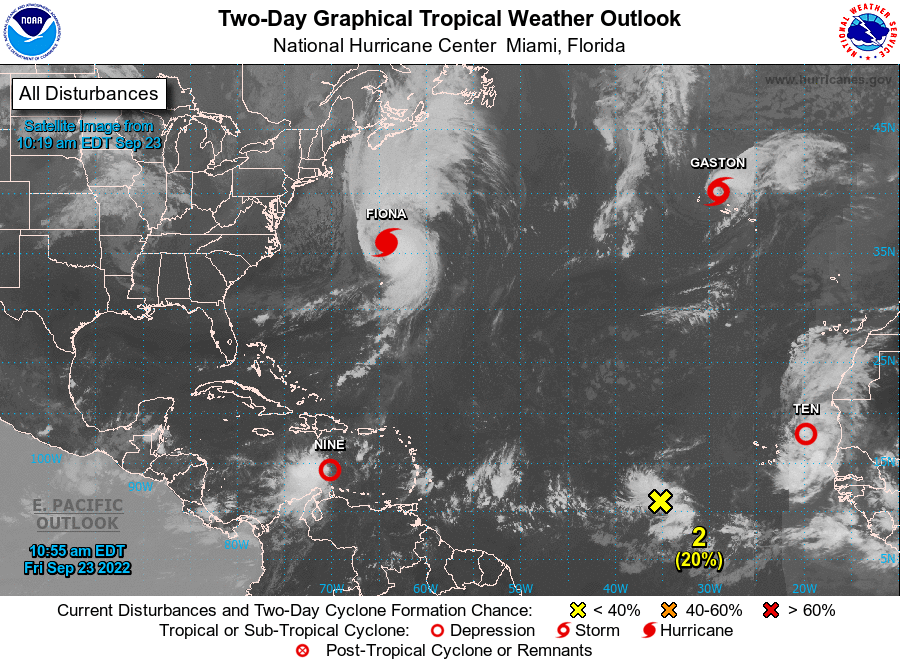National Hurricane Center (NHC) Overview

The National Hurricane Center (NHC) is a specialized unit of the National Weather Service responsible for monitoring and forecasting hurricanes and tropical storms in the Atlantic Ocean and eastern Pacific Ocean. The NHC was established in 1954 and is headquartered in Miami, Florida.
The NHC’s mission is to save lives and property by providing timely and accurate forecasts and warnings of hurricanes and tropical storms. The NHC monitors weather conditions in the Atlantic Ocean and eastern Pacific Ocean 24 hours a day, 7 days a week. When a tropical disturbance forms, the NHC issues advisories and warnings to keep the public informed about the storm’s track and intensity. The NHC also provides forecasts of the storm’s future track and intensity, which can help people make decisions about whether to evacuate or take other precautions.
In addition to its forecasting responsibilities, the NHC also conducts research on hurricanes and tropical storms. This research helps the NHC to improve its forecasting accuracy and to develop new products and services to help people prepare for and respond to hurricanes and tropical storms.
Services and Products
The NHC provides a variety of services and products to the public, including:
- Hurricane advisories and warnings
- Tropical weather outlooks
- Tropical cyclone reports
- Hurricane preparedness information
- Hurricane research
The NHC’s hurricane advisories and warnings are the most important products that the center produces. These advisories and warnings provide information about the storm’s track, intensity, and potential impacts. The NHC issues advisories and warnings every six hours for tropical storms and every three hours for hurricanes.
The NHC’s tropical weather outlooks provide information about the potential for tropical cyclone development in the next five days. The NHC issues tropical weather outlooks twice a day, at 8:00 AM and 8:00 PM Eastern Time.
The NHC’s tropical cyclone reports provide detailed information about tropical cyclones that have formed in the Atlantic Ocean and eastern Pacific Ocean. These reports include information about the storm’s track, intensity, and potential impacts. The NHC issues tropical cyclone reports every six hours for tropical storms and every three hours for hurricanes.
The NHC’s hurricane preparedness information provides information about how to prepare for and respond to hurricanes. This information includes tips on how to develop a hurricane preparedness plan, how to evacuate if necessary, and how to stay safe during a hurricane.
The NHC’s hurricane research helps the center to improve its forecasting accuracy and to develop new products and services to help people prepare for and respond to hurricanes. The NHC conducts research on a variety of topics, including hurricane formation, hurricane intensity, and hurricane impacts.
Hurricane Forecasting and Analysis: National Hurricane Center

The National Hurricane Center (NHC) uses a combination of advanced technologies and scientific expertise to forecast and analyze hurricanes. These methods and technologies include computer models, satellite imagery, aircraft reconnaissance, and surface observations.
Computer models are mathematical simulations that use data from past hurricanes and current weather conditions to predict the path and intensity of future storms. Satellite imagery provides real-time information about the structure and movement of hurricanes. Aircraft reconnaissance missions fly into hurricanes to collect data on wind speed, pressure, and temperature. Surface observations from buoys, ships, and coastal stations provide additional information about hurricane conditions.
Types of Hurricane Forecasts and Advisories, National hurricane center
The NHC issues a variety of hurricane forecasts and advisories, including:
- Tropical Weather Outlooks: These outlooks provide information on areas where tropical cyclones are likely to develop within the next 48 hours.
- Tropical Cyclone Updates: These updates provide information on the location, intensity, and movement of tropical cyclones that have already formed.
- Hurricane Watches: These watches are issued when there is a threat of hurricane conditions within 48 hours.
- Hurricane Warnings: These warnings are issued when hurricane conditions are expected within 36 hours.
Accuracy and Limitations of Hurricane Forecasting
Hurricane forecasting has improved significantly in recent decades, but there are still limitations to the accuracy of forecasts. The main factors that affect the accuracy of hurricane forecasts are the availability of data, the complexity of hurricane dynamics, and the uncertainty in the initial conditions.
Despite these limitations, hurricane forecasts are essential for providing timely warnings to coastal communities. These warnings allow residents to evacuate to safety and take other precautions to protect themselves from the impacts of hurricanes.
Examples of Successful and Unsuccessful Hurricane Forecasts
There have been many successful hurricane forecasts in recent years, including the forecasts for Hurricane Katrina in 2005 and Hurricane Sandy in 2012. However, there have also been some unsuccessful hurricane forecasts, such as the forecast for Hurricane Andrew in 1992.
The accuracy of hurricane forecasts has improved significantly in recent decades, but there are still limitations to the accuracy of forecasts. The main factors that affect the accuracy of hurricane forecasts are the availability of data, the complexity of hurricane dynamics, and the uncertainty in the initial conditions.
Hurricane Preparedness and Response

The National Hurricane Center (NHC) plays a critical role in hurricane preparedness and response. The NHC monitors tropical cyclones in the Atlantic and eastern Pacific basins, providing forecasts, advisories, and warnings to the public and emergency management officials. The NHC also works with other agencies to coordinate hurricane response efforts.
The NHC offers various resources and tools to the public for hurricane preparedness. These resources include hurricane preparedness guides, evacuation maps, and a hurricane tracking tool. The NHC also provides social media updates and live briefings during hurricanes.
To develop a hurricane preparedness plan, it is important to identify potential risks and develop a plan for evacuation, communication, and shelter. It is also important to have a supply of food, water, and other essential items on hand.
There have been many effective hurricane response efforts in recent years. One example is the response to Hurricane Sandy in 2012. The NHC provided timely and accurate forecasts and warnings, which helped emergency managers prepare for the storm. The response to Hurricane Sandy also included a massive evacuation effort, which helped to save lives.
The National Hurricane Center closely monitors tropical cyclones, including Hurricane Beryl, which recently impacted the Dominican Republic. Hurricane Beryl Dominican Republic provides up-to-date information on the storm’s path and potential effects. By staying informed through the National Hurricane Center, communities can take necessary precautions and prepare for the potential impact of hurricanes.
The National Hurricane Center provides vital information on tropical cyclones, including detailed spaghetti models that predict their potential paths. These models are crucial for understanding the potential impacts of hurricanes and developing preparedness plans. By closely monitoring spaghetti models, the National Hurricane Center can provide timely warnings and advisories, helping to keep communities safe.